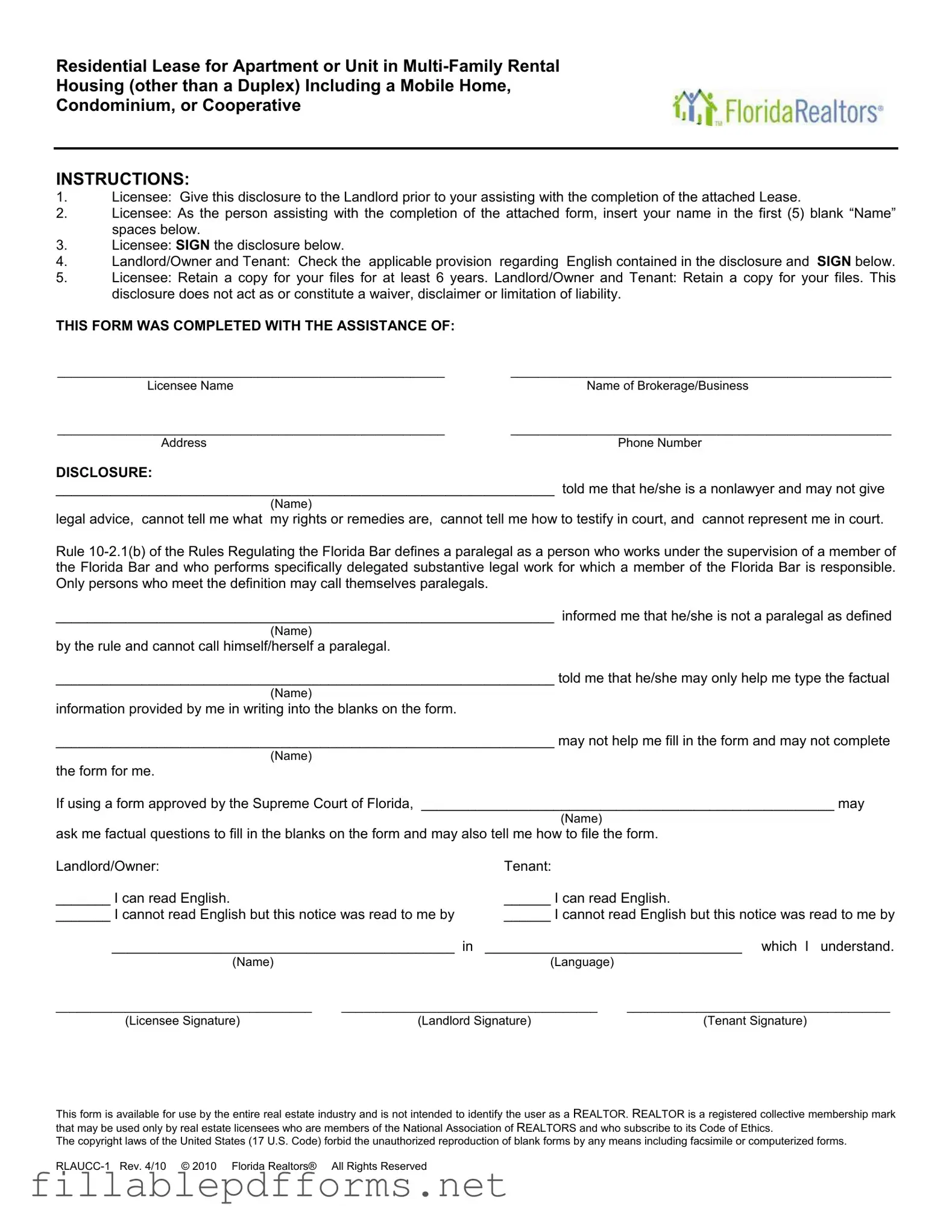Florida Realtors Residential Lease PDF Template
The Florida Realtors Residential Lease form is a legal document used for renting apartments or units in multi-family housing, including mobile homes, condominiums, or cooperatives. This form outlines the terms and conditions of the lease agreement between the landlord and tenant, ensuring both parties understand their rights and responsibilities. It is essential for both landlords and tenants to carefully review this document to foster a clear and respectful rental relationship.
Launch Editor Here
